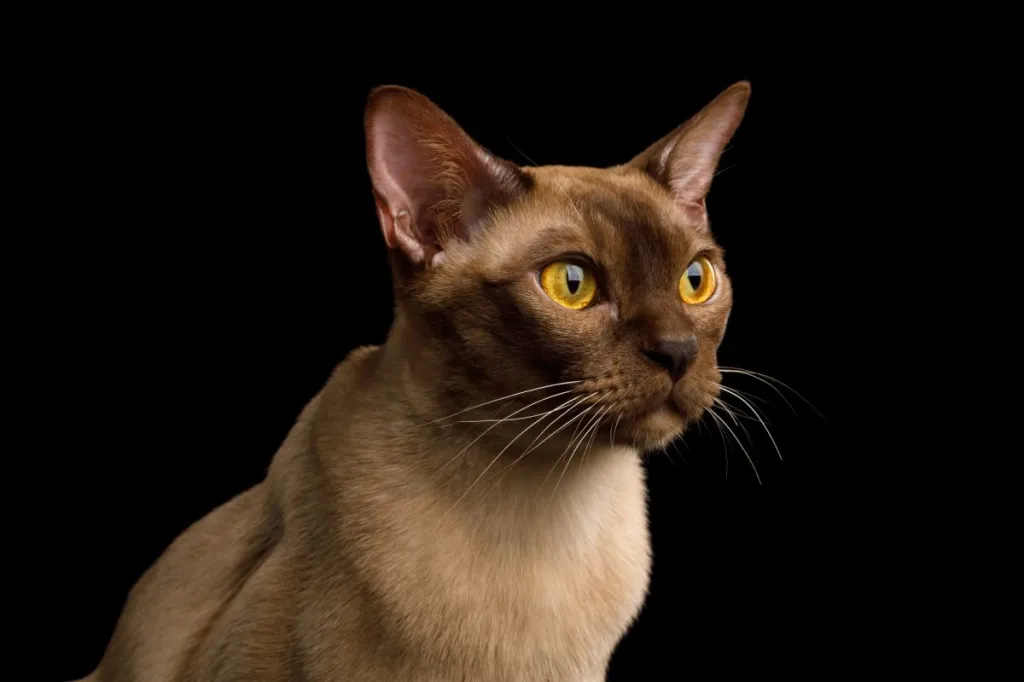The Burmese cat, often referred to as the “Burmese,” is a distinctive and popular breed known for its striking appearance, affectionate nature, and engaging personality. Their affectionate and sociable nature makes them wonderful companions for individuals and families alike. The Burmese cat breed originated in Southeast Asia, specifically in Burma (now Myanmar), and breeders brought the cat to the Western world in the early 20th century. They are closely related to the Siamese cat and share some common ancestry.
Burmese cats typically have affectionate, outgoing, and people-oriented personalities. They are “people cats” because they enjoy human companionship and thrive on social interaction. These cats are highly intelligent, playful, and curious, making them wonderful additions to households with active families.
When considering a Burmese, it’s advisable to prioritize adopting from rescue organizations or shelters to provide a loving home to a cat in need. However, if you decide to purchase a Burmese kitten, it’s crucial to choose a reputable breeder. Conduct thorough research to ensure that the breeder follows ethical practices and prioritizes the well-being of their cats. Reputable Burmese breeders prioritize the health and temperament of their cats, conduct necessary health screenings, and provide a nurturing environment for the kitties. This active approach ensures that you bring home a healthy and happy kitty while discouraging unethical breeding practices.
Quick Facts
- Origin: Southeast Asia (Burma, now Myanmar)
- Size: Medium
- Breed group: Shorthair
- Lifespan: 10-16 years
- Coat: Short, silky, and satin-like
- Temperament: Affectionate, outgoing, and people-oriented
- Exercise needs: Moderate
- Training: Easy to train
- Grooming: Low-maintenance
- Health: Generally healthy, but may be prone to certain health conditions such as hypertrophic cardiomyopathy and patellar luxation
- Burmese cats come in two variations: American and British. The American version is slightly larger, while the British version is leaner.
- The Tonkinese cat was created by breeding a Burmese cat with a Siamese.
- The Burmese is a stout breed, often feeling heavier than they look.
- All Burmese cats can trace their lineage back to Wong Mau, the cat originally brought over to the United States begin the breed.
Burmese Pictures
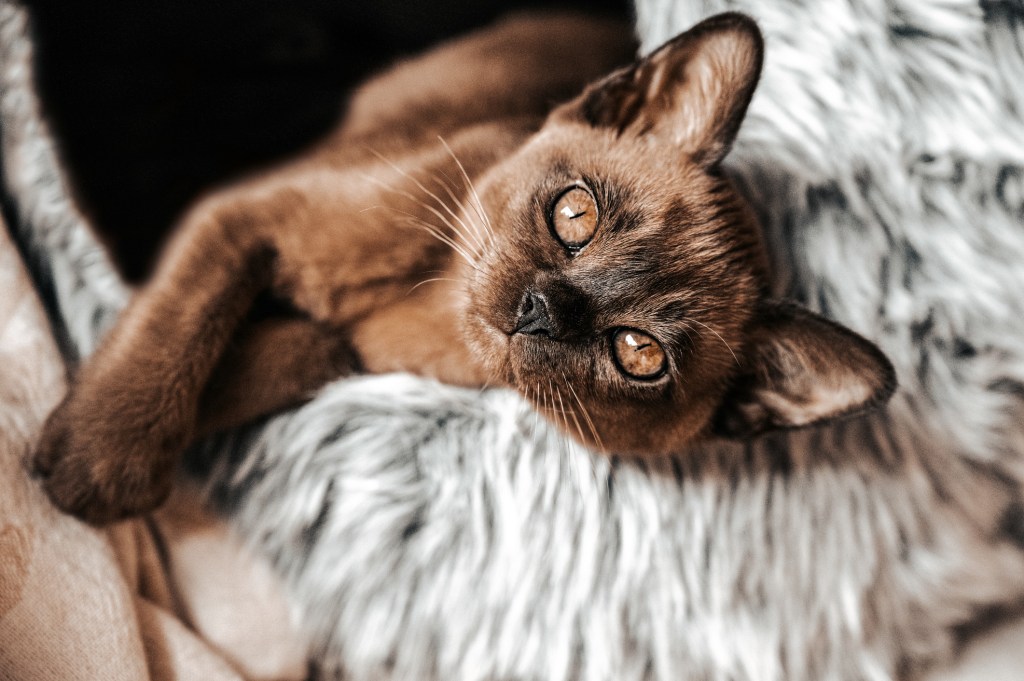
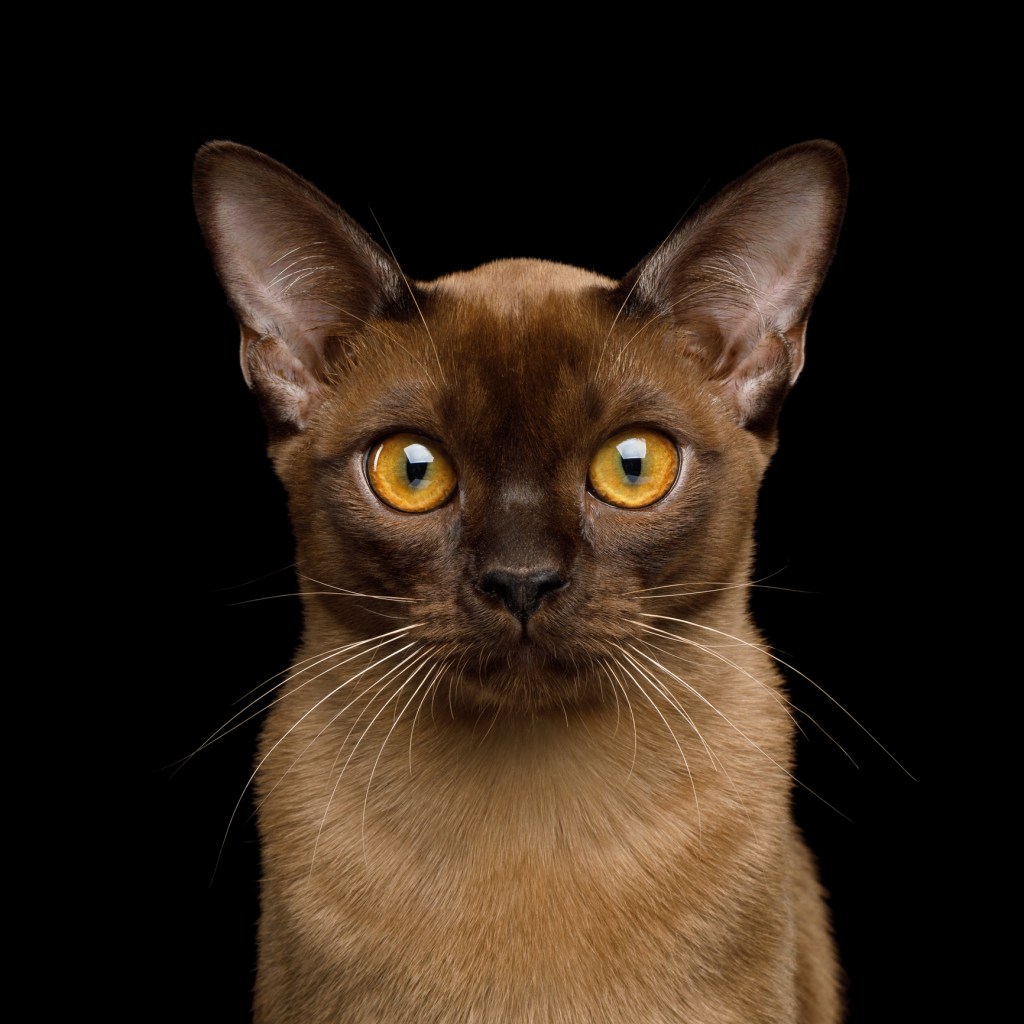
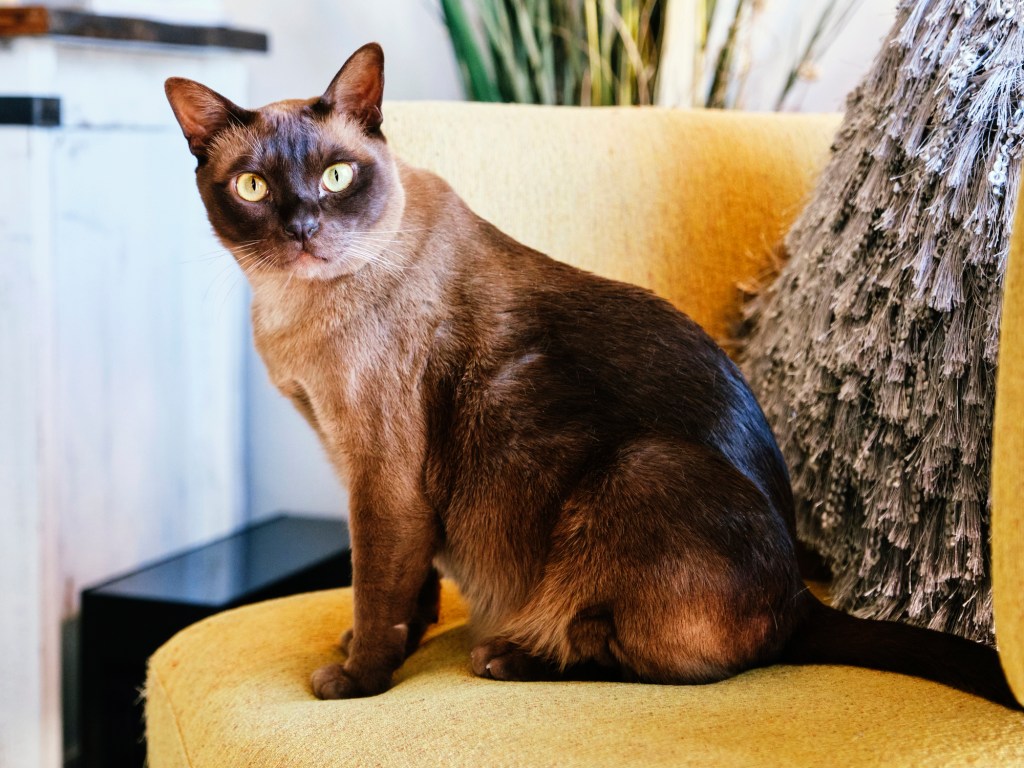
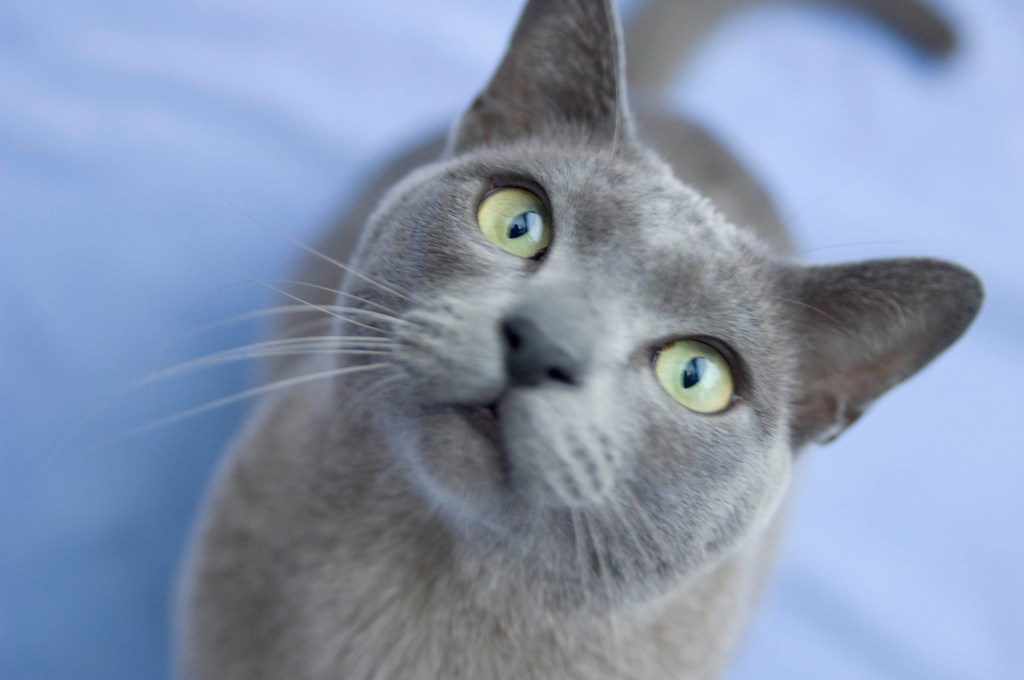
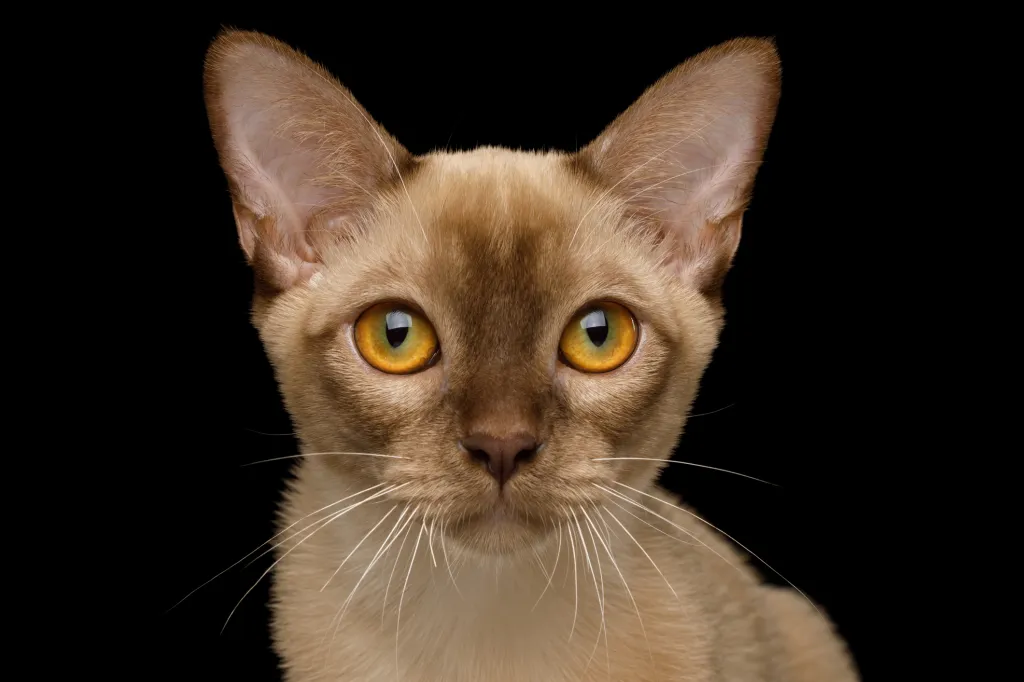
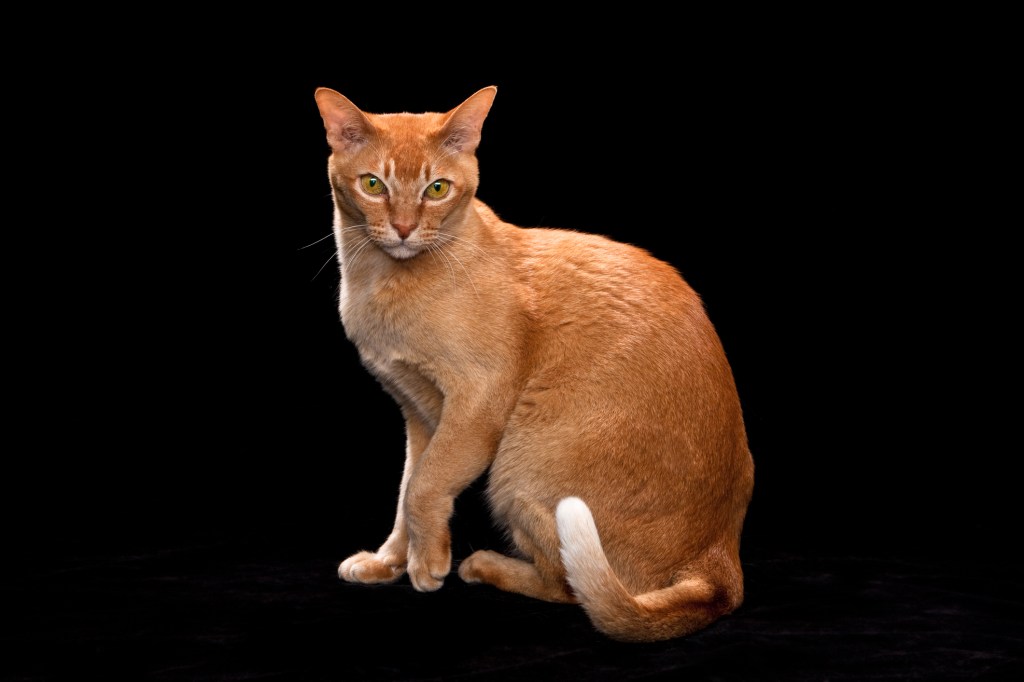
-
Affectionate with Family
Some cat breeds are typically independent and aloof, even if they’ve been raised by the same person since kittenhood; others bond closely to one person and are indifferent to everyone else; and some shower the whole family with affection. Breed isn’t the only factor that goes into affection levels; cats who were raised inside a home with people around feel more comfortable with humans and bond more easily.

See Cats Less Affectionate with Family -
Amount of Shedding
If you’re going to share your home with a cat, you’ll need to deal with some level of cat hair on your clothes and in your house. However, shedding does vary among the breeds. If you’re a neatnik, you’ll need to either pick a low-shedding breed or relax your standards. This furniture cover can make it easier to clean up cat hair and keep it off your sofa!
-
General Health
Due to poor breeding practices, some breeds are prone to certain genetic health problems. This doesn’t mean that every cat of that breed will develop those diseases; it just means that they’re at an increased risk. If you’re looking only for purebred cats or kittens, it’s a good idea to find out which genetic illnesses are common to the breed you’re interested in.
-
Potential for Playfulness
Some cats are perpetual kittens—full of energy and mischief—while others are more serious and sedate. Although a playful kitten sounds endearing, consider how many games of chase the mouse-toy you want to play each day, and whether you have kids or other animals who can stand in as playmates. A classic wand cat toy like this one is perfect for playful felines!
-
Kid-Friendly
Being tolerant of children, sturdy enough to handle the heavy-handed pets and hugs they can dish out, and having a nonchalant attitude toward running, screaming youngsters are all traits that make a kid-friendly cat. Our ratings are generalizations, and they’re not a guarantee of how any breed or individual cat will behave; cats from any breed can be good with children based on their past experiences and personality.
-
Friendly Toward Strangers
Stranger-friendly cats will greet guests with a curious glance or a playful approach; others are shy or indifferent, perhaps even hiding under furniture or skedaddling to another room. However, no matter what the breed, a cat who was exposed to lots of different types, ages, sizes, and shapes of people as a kitten will respond better to strangers as an adult.
-
Easy to Groom
Some breeds require very little in the way of grooming; others require regular brushing to stay clean and healthy. Consider whether you have the time and patience for a cat who needs daily brushing. You should definitely pick up this awesome de-shedding tool for cats of any hair length!
-
Intelligence
Some cat breeds are reputed to be smarter than others. But all cats, if deprived the mental stimulation they need, will make their own busy work. Interactive cat toys are a good way to give a cat a brain workout and keep them out of mischief. This scratcher cat toy can keep your smart kitty busy even when you’re not home!
-
Pet Friendly
Friendliness toward other household animals and friendliness toward humans are two completely different things. Some cats are more likely than others to be accepting of other pets in the home.
Burmese History
The ancestors of the Burmese are the Siamese and the “copper cat” of Burma (now known as Myanmar). It’s thought that they were temple and palace cats bred and kept by priests. The matriarch of the modern Burmese was a small, dark-brown cat named Wong Mau. She belonged to Dr. Joseph Thompson, who either acquired her from a sailor or brought her back himself from his travels, depending on which story you believe.
Wong Mau was at first thought to be a Siamese with a chocolate-colored coat. Such Siamese weren’t unheard of. “Chocolate Siamese” were described in the 1880s. Their bodies were tan or brown, and they had seal-brown or nearly black points. The seal-point Siamese, also known as royal Siamese, had lighter bodies that contrasted with their dark points and were preferred by breeders and the public.
The chocolate-colored cats eventually disappeared in Britain, but they still existed in Thailand and Burma (now known as Myanmar), where they were probably the offspring of natural (as opposed to human-directed) matings between free-roaming Siamese (pointed) and solid-colored Burmese cats. Wong Mau was one of them. It was her destiny to become the matriarch of two new breeds: the Burmese and, later, the Tonkinese.
Dr. Thompson bred Wong Mau to a seal-point Siamese named Tai Mau. His breeding program, in conjunction with breeders Virginia Cobb and Billie Gerst and geneticist Clyde Keeler, produced kittens with beige, brown and pointed coats. The results, including the discovery of the Burmese gene, were so interesting that Thompson published an article on the subject in a 1943 issue of the Journal of Heredity, the first such piece on feline genetics.
The Cat Fanciers Association began registering Burmese in 1936 but suspended registrations in 1947 because breeders were still using Siamese in their breeding programs. Registrations resumed in 1953 after the practice was stopped. Today the Burmese is a popular breed among cat lovers.
Burmese Size
Burmese cats are typically of medium size and have a graceful, slender build. Adult Burmese cats usually weigh between 6 to 12 pounds on average.
Burmese Personality
The Burmese is energetic and friendly. He has the charm and determination of his Siamese ancestors, and enjoys conversation as much as that breed, but his voice is soft and sweet, belying his tendency to run the household with an iron paw sheathed in velvety fur. He is highly intelligent and seeks out human companionship, so he’s not best suited to a home where he will be left alone much of the day.
If no humans will be around to engage his intellect, be sure he has the company of another pet. He gets along well with other cats and with dogs, but of course another Burmese will be his best pal. The Burmese is about as curious as cats come. Expect him to explore your home thoroughly and know all of its nooks and crannies. He is playful and remains so into adulthood.
Tease his clever mind with interactive toys, and teach him tricks that will allow him to show off for an audience. Besides sit, roll over, wave and come, he can learn to fetch a small toy or walk on a leash. With proper early conditioning, car rides and vet visits will be a breeze.
A Burmese is a good choice if you don’t object to complete loss of privacy. This cat will want to be involved in everything you do, from reading the newspaper and working at the computer to preparing meals and watching television. He will, of course, sleep on the bed with you and may even snuggle under the covers. When you are sitting down, he will be in your lap or right next to you, waiting expectantly to be petted. You will be scolded if you ignore him. Guests will receive his full attention, and it is likely that he will win over even those who claim to dislike cats. A female Burmese is the very definition of queenliness. She likes attention and she likes to be in charge. Males are more restful, satisfied to fill a lap. Whichever you choose, it’s likely that you will soon find yourself yearning for another.
Burmese Health
Both pedigreed cats and mixed-breed cats have varying incidences of health problems that may be genetic in nature. Burmese are generally healthy, although they can be prone to gingivitis and may be sensitive to anesthesia. The following diseases have also been seen in Burmese:
- Lipemia of the Aqueous Humor: Lipemia of the aqueous humor, or lipemic aqueous humor, is a medical condition in which the clear fluid (aqueous humor) that fills the front part of the eye becomes cloudy or milky due to the presence of lipids (fats). It creates a transient milky appearance of the eye during kittenhood, which usually resolves on its own.
- Corneal Dermoid: Corneal dermoid is a relatively rare but specific congenital eye condition that can affect Burmese cats, as well as cats of other breeds. Corneal dermoids are benign growths or tumors on the cornea, which is the clear, outermost layer of the eye. These growths consist of tissue elements, such as hair, skin, or sweat glands, that should not be present on the cornea.
- Orofacial Pain Syndrome: Indicated by exaggerated licking and chewing motions and pawing at the mouth. The discomfort can increase when the cat is excited or stressed, and the cats often are reluctant to eat because the activity is painful. Some cats must wear an Elizabethan collar and have their paws bandaged so they don’t hurt themselves. Some cases resolve on their own, then recur. The cause and the mode of inheritance are unknown. Pain medications and anti-seizure drugs can help, as can consultation with a veterinary dentist to rule out dental disease.
- Congenital Peripheral Vestibular Disease: This disease causes head tilting, poor balance, rapid eye movements and uncoordinated walking in kittens. Some kittens with the condition may also be deaf.
- Hypokalemic Polymyopathy: Muscle weakness caused by low levels of potassium in the blood, which is sometimes seen in Burmese kittens. Signs include general weakness, a stiff gait, reluctance to walk, and head tremors. It can be treated with potassium supplements given orally.
- Flat-Chested Kitten Syndrome: Flat-chested kitten syndrome, also known as pectus excavatum, is a congenital condition that affects some kittens. It results in a deformity of the chest wall, causing it to appear flat or concave rather than the normal rounded shape. This condition can affect the development of a kitten’s ribcage, sternum, and associated chest structures
- Kinked Tail: This is usually as a result of a deformity of the tailbone. It causes no pain or discomfort.
- Elbow Osteoarthritis: Elbow osteoarthritis in cats is a degenerative joint disease that affects the elbow joint. It is a condition where the smooth cartilage that covers the surfaces of the elbow joint gradually breaks down over time, leading to pain, inflammation, and decreased joint function.
- Endocardial Fibroelastosis: This is a heart condition in which the left ventricle of the heart thickens, stretching the heart muscle. Signs usually develop when a kitten is 3 weeks to 4 months old, good reason to wait until 4 months to bring a kitten home.
- Dilated Cardiomyopathy: Dilated cardiomyopathy (DCM) is a heart disease that can affect cats, including Burmese cats. DCM is a condition in which the heart’s muscular walls become thin and weak, which leads to the heart becoming enlarged and less efficient at pumping blood. This can result in a range of cardiovascular issues and potentially impact the cat’s overall health.
- Diabetes Mellitus: Diabetes mellitus is a metabolic disorder that can affect cats, including Burmese cats. Diabetes in cats is similar in many ways to diabetes in humans. It is characterized by the body’s inability to regulate blood sugar (glucose) properly, leading to elevated blood sugar levels.
Burmese Care
The soft, short coat of the Burmese is easily cared for with weekly brushing or combing to remove dead hair and distribute skin oil. A bath is rarely necessary. Brush the teeth to prevent periodontal disease. Daily dental hygiene is best, but weekly brushing is better than nothing. Wipe the corners of the eyes with a soft, damp cloth to remove any discharge. Use a separate area of the cloth for each eye so you don’t run the risk of spreading any infection.
Check the ears weekly. If they look dirty, wipe them out with a cotton ball or soft damp cloth moistened with a 50-50 mixture of cider vinegar and warm water. Avoid using cotton swabs, which can damage the interior of the ear.
Keep the litter box spotlessly clean. Like all cats, Burmese are very particular about bathroom hygiene. It’s a good idea to keep a Burmese as an indoor-only cat to protect him from diseases spread by other cats, attacks by dogs or coyotes, and the other dangers that face cats who go outdoors, such as being hit by a car. Burmese who go outdoors also run the risk of being stolen by someone who would like to have such a beautiful cat without paying for it.
Burmese Coat Color And Grooming
The Burmese is often described as a “brick wrapped in silk,” a testament to his solid, muscular body. While the original Burmese was a dark solid-brown color known as sable, he now comes in other shades as well, including blue, champagne and platinum. The cats have a compact body with a rounded head; large, expressive eyes in gold or yellow; and medium-size ears that are rounded at the tips and tilt slightly forward.
The coat is short and satiny. The traditional sable is a rich, warm brown, slightly lighter on the underbody. A kitten’s coat darkens as it matures. Nose leather and paw pads are brown. A champagne-colored Burmese is a warm honey-beige shading to a pale gold-tan on the underside. Nose leather is a light warm brown and paw pads are a warm pinkish tan. Blue Burmese have a medium-blue coat with a slightly lighter belly. Nose leather and paw pads are slate gray. Platinum Burmese are a pale silvery-gray with light fawn undertones and a slightly lighter color on the underbody. The nose leather and paw pads are a pretty lavender-pink. Some associations permit other colors, including tortoiseshell, lilac and red.
Children And Other Pets
The active and social Burmese is a perfect choice for families with children and cat-friendly dogs. He will play fetch as well as any retriever, learns tricks easily and loves the attention he receives from children who treat him politely and with respect. He lives peacefully with cats and dogs who respect his authority. Always introduce pets slowly and in controlled circumstances to ensure that they learn to get along together.
Burmese Rescue Groups
More Info For You
If you’re also looking for a dog, check out DogTime.com’s dog breed page!
